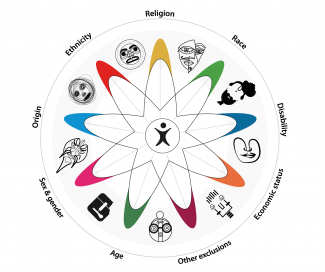Submitted by
ManuelRothe
on
Tue, 12/10/2019 - 18:52
A person’s gender, age, disability and other factors can lead them to be disproportionally more affected by disasters. Disaster risk reduction policies and practices must integrate an inclusion perspective which considers different, mutually reinforcing drivers of social exclusion and poverty and the individuals and groups in the community which are affected by them.

© SDC
During the risk mapping process, the different at-risk groups in the community and the specific risks faced by them must be identified, ideally together with members of the groups themselves.
Consider these often-forgotten risks:
- Barriers to mobility, because of inaccessible roads/paths, transportation, shelter or restrictive social norms.
- Barriers to communication with family, caregivers, friends and services.
- Loss of assistive devices.
- Not being provided with early warning messages in time or in an accessible way.
- Separation from families, caregivers or personal assistants during evacuation.
- Disruption of support networks such as peer-support groups.
- Limited mobility during disaster due to cultural norms or lack of safe transportation.
- Lack of access to adequate nutrition, medical services and facilities in shelter, safe spaces or displacement camps.
- Sexual exploitation and abuse due to lack of protection in shelter or displacement camps.
- Trafficking for child labour, early and forced marriage, organ trafficking, illegal adoption, sexual exploitation and other forms of trafficking.
- Lower self-rescue ability because of an impairment, such as running, swimming or climbing.
Sources
Swiss Agency for Development and Coorperation (SDC). Leave No One Behind. 2018